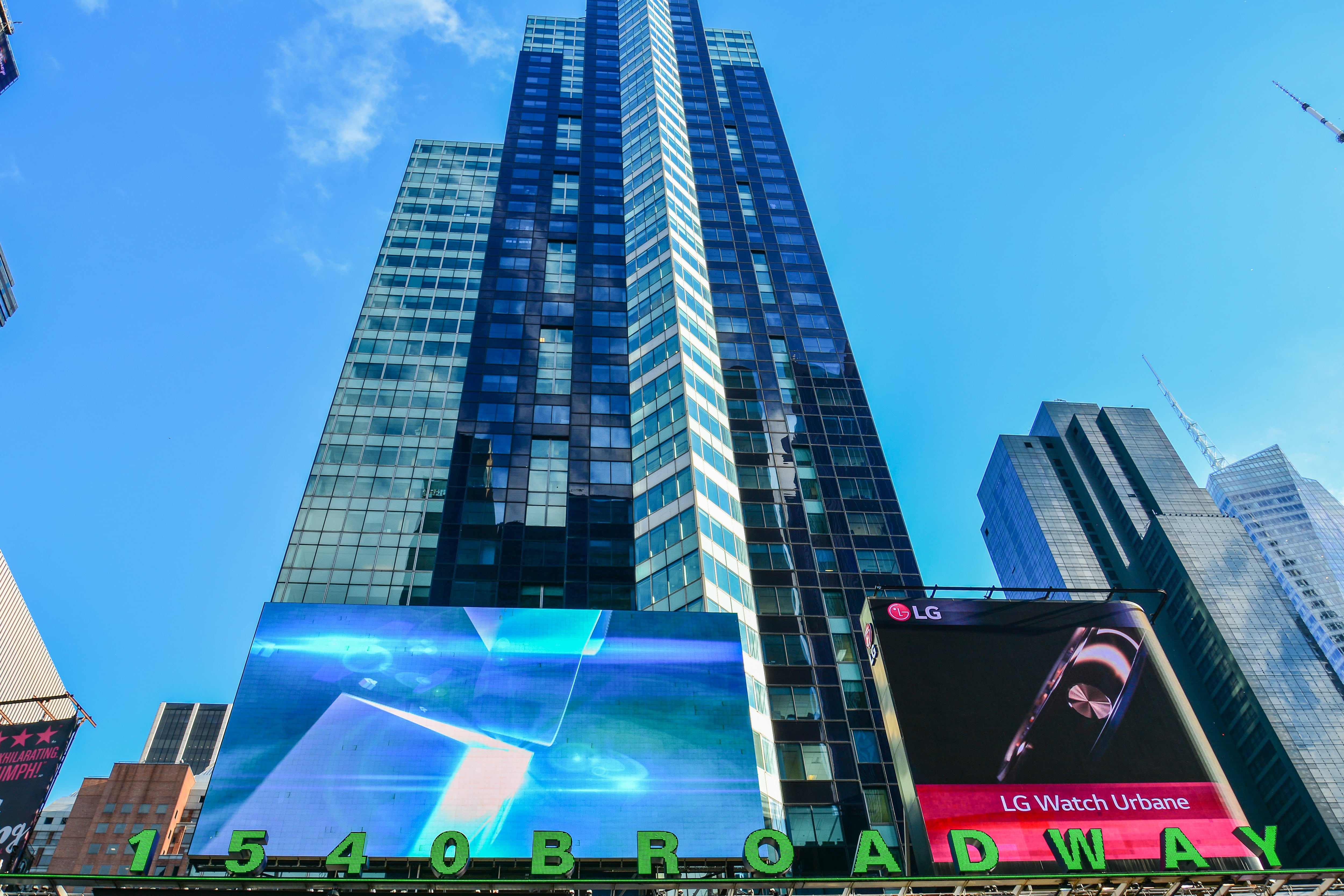Data didn’t kill billboards; it gave them Wi-Fi. Once static and predictable, DOOH advertising has turned one of the oldest media in marketing into one of the smartest.
Billboards, kiosks, and digital displays have quietly become part of daily life, the background of commutes, city walks, and weekend errands. DOOH (Digital Out of Home) advertising brings them into focus again, transforming blank spaces into real-time communication channels that move with the moment. It’s proof that the most powerful digital platforms often live outside your pocket.
In this article, we’ll explore what DOOH advertising is, how it works, the benefits it delivers, and how to build a DOOH strategy that drives measurable results.
See how we implement cannabis digital out-of-home advertising campaigns.
What Is DOOH Advertising?
DOOH advertising uses digital screens in public spaces to display dynamic, data-driven content. These include billboards, transit hubs, shopping centers, gyms, airports, and even gas-station or elevator screens.
While traditional OOH relies on static creative and manual updates, digital out-of-home advertising introduces automation, motion, and real-time targeting, making it as flexible as any digital channel.
creative by time of day, respond to weather triggers, or synchronize outdoor messaging with other digital campaigns to create cohesive, real-world storytelling. Learn more about how digital channels work together in our Digital Cannabis Marketing Guide.
How DOOH Advertising Works
Every DOOH campaign connects four key players: advertisers, media owners, ad exchanges, and audiences.
- Advertisers set campaign parameters including audience, geography, and timing.
- Media owners provide access to digital screens across public and private networks.
- Ad exchanges and DSPs handle programmatic buying, so that ads display in relevant locations.
- Audiences experience these messages during their everyday journeys, often followed by additional exposure on mobile or CTV.
The rise of programmatic DOOH has redefined outdoor advertising. Instead of static media buys, placements can automatically adjust based on live data such as commuter density, event schedules, or environmental triggers. Learn how location data powers DOOH precision in our guide to geo-targeting in cannabis marketing.
Benefits of DOOH Advertising
DOOH combines the scale of outdoor media with the intelligence of digital targeting. Its greatest strength lies in its adaptability, reaching audiences in real-world environments while maintaining data-backed precision.
Key Advantages
- Reach meets relevance: Capture broad audiences across multiple locations while maintaining contextual accuracy.
- Creative agility: Update content instantly to reflect time-sensitive promotions or regional messaging.
- High recall and impact: According to Nielsen, digital billboards drive more than 50% higher recall than static signs.
- Omnichannel alignment: DOOH extends your digital ecosystem, reinforcing search, mobile, and CTV messaging.
- Brand-safe environments: Screens are curated, high-visibility placements with built-in audience and content controls.
Flexibility gives DOOH its advantage. Real-time creative control allows brands to align messages with context and intent, something traditional outdoor media could never achieve.
Key Components of a DOOH Advertising Strategy
A strong DOOH advertising strategy blends audience intelligence with creative precision and real-time optimization.
- Set clear objectives: Awareness, traffic, or conversion; every campaign should start with defined KPIs.
- Segment and target: Use demographic and behavioral data to identify high-value audiences.
- Choose the right formats: Pair placements with intent, using billboards for reach and kiosks for engagement.
- Design for motion: Dynamic visuals and minimal text improve visibility in fast-moving environments.
- Automate with programmatic tools: Schedule ads, manage bidding, and measure results from a unified dashboard.
- Track performance: Measure impressions, dwell time, and conversion lift to assess impact.
Contextual relevance drives performance. The more precisely your message aligns with the moment and location, the higher the engagement and recall.
Types of DOOH Advertising Formats
Digital out-of-home formats offer size/location flexibility for awareness, engagement, or conversion-focused goals.
- Large-format digital billboards: Perfect for high-traffic highways and city centers.
- Transit DOOH: Screens in buses, airports, and subways connect with daily commuters.
- Retail and mall screens: Reach shoppers near point-of-purchase moments.
- Street furniture and kiosks: Touch-enabled displays that invite interaction.
- Venue-based screens: Found in gyms, stadiums, and entertainment spaces, ideal for lifestyle targeting.
Each placement can be customized by geography, timing, and contextual signals, giving advertisers a range of options to shape their reach strategy.
Measuring Success in DOOH Advertising
Today’s DOOH platforms make performance tracking transparent and measurable.
Core Metrics
- Impressions and reach: Measure audience exposure and frequency.
- Dwell time: Evaluate how long people remain in proximity to the display.
- Engagement signals: Use QR scans, coupon redemptions, or app visits as behavioral proof.
- Attribution data: Connect exposure to in-store or online conversions using mobile integrations.
Leading platforms such as Vistar Media, Broadsign, and Hivestack provide programmatic dashboards to visualize campaign performance and foot-traffic lift. Learn more about programmatic advertising for cannabis brands to understand how DOOH integrates with data-driven campaigns.
Future Trends in DOOH Advertising (2026 and Beyond)
DOOH continues to evolve alongside technology and consumer expectations.
Emerging Trends
- AI-driven targeting: Predictive analytics enable smarter, real-time placement decisions.
- Omnichannel retargeting: Sync outdoor exposures with mobile and connected TV to extend impact.
- 3D and immersive formats: Eye-catching screens create viral, shareable experiences.
- Sustainable media networks: Energy-efficient LEDs and eco-conscious partnerships are driving industry growth.
According to Statista, global DOOH ad spend is projected to exceed $26.3 billion by 2030, signaling continued momentum for marketers pursuing measurable visibility.
To see how DOOH connects with other digital screens, explore our insights on CTV advertising strategies and discover how connected storytelling extends from the street to the living room.
When Creativity Meets Connectivity
The story of DOOH isn’t about technology replacing creativity; it’s about using data to amplify it. Billboards gained Wi-Fi, but they also gained empathy, timing, and precision. When creativity meets connectivity, outdoor advertising becomes more than exposure; it becomes interaction. That’s the real power of DOOH, and it’s only getting stronger.
Want to explore how DOOH fits into your marketing strategy? Contact MediaJel to start the conversation.
.svg)









